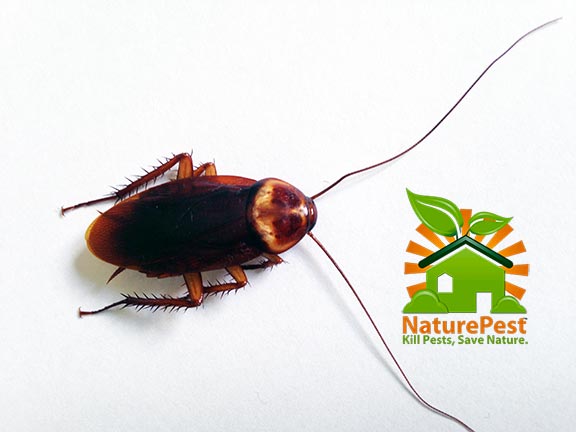Of all pests roaches pose the greatest health risk in homes, restaurants, hotels, medical facilities, supermarkets, bars and other food service establishments with most food poising as a direct result of Bacteria, parasite and fungi transmitted by Cockroaches.
93 Disease caused by bacteria, parasites and fungi transmitted by Cockroaches
Roaches like Blattella germanica the German Cockroach known as small roaches and Periplaneta americana the American Cockroach known as large roaches are the two primary roaches that infest structures where people dwell and transmit diseases to humans.
Improper unhygienic food handling practices, transportation, and processing making food consumers sick from bacterial illnesses through the dissemination of the pathogens by utensils, cups, dishes, cookware, refrigeration units and surfaces that have come in contact with roaches.
Places like where there is standing water such and moist environments with abundant food like sewers, toilets, kitchen and drainage where water and decaying matter serve as a migration routes from place to place is where roaches can be found when they come in contact with waste or any pathogen they can transport it on their bodies at about 14 million bacterial load.
Theses cockroaches are carriers of intestinal diseases, such as cholera, diarrhea, dysentery and typhoid fever, they also cause respiratory infections, asthma and allergies, skin infections, dermatitis, itching and the selling of eyelids. With more serious illness like plague, leprosy and poliomyelitis.
List of 93 Bacteria, Parasite and Fungi Transmitted by Cockroaches
E. casseliflavus, E. faecalis, Enterococci, E. hirae, Entrerococci faecium
Steinernema carpocapsae, Toxoplasma gondii
Bacillus, Escherichia coli, Proteus, Pseudomonas, Serratia, Staphylococcus, Streptococcus
Bacillus cereus, E.coliO157, Salmonella B, Salmonella D, Salmonella E, Shigella flexneri
Entameba coli, Entameba histolytica, Enterobius vermicularis, Hookworms, Trichuris trichuira
Entamoeba dispar, Entamoeba moshkovski, Giardia duodenalis, Taenia spp,
Enterobacter sp., Pantoea sp., Pseudomonas aeruginosa, Serratia marcescens, Staphylococcus aureus
Enterobacter aerogenespneumonia, Proteus mirabilis,
Candidatus Rhabdochlamydia porcellionis
Effective roach control requires an integrated pest management approach of prevention, exclusion, sealing, monitoring and control treatments with non toxic organic and inorganic dusts, gel baits, dust baits, granular baits, sticky traps, IGR’s Insect Growth Regulators.







